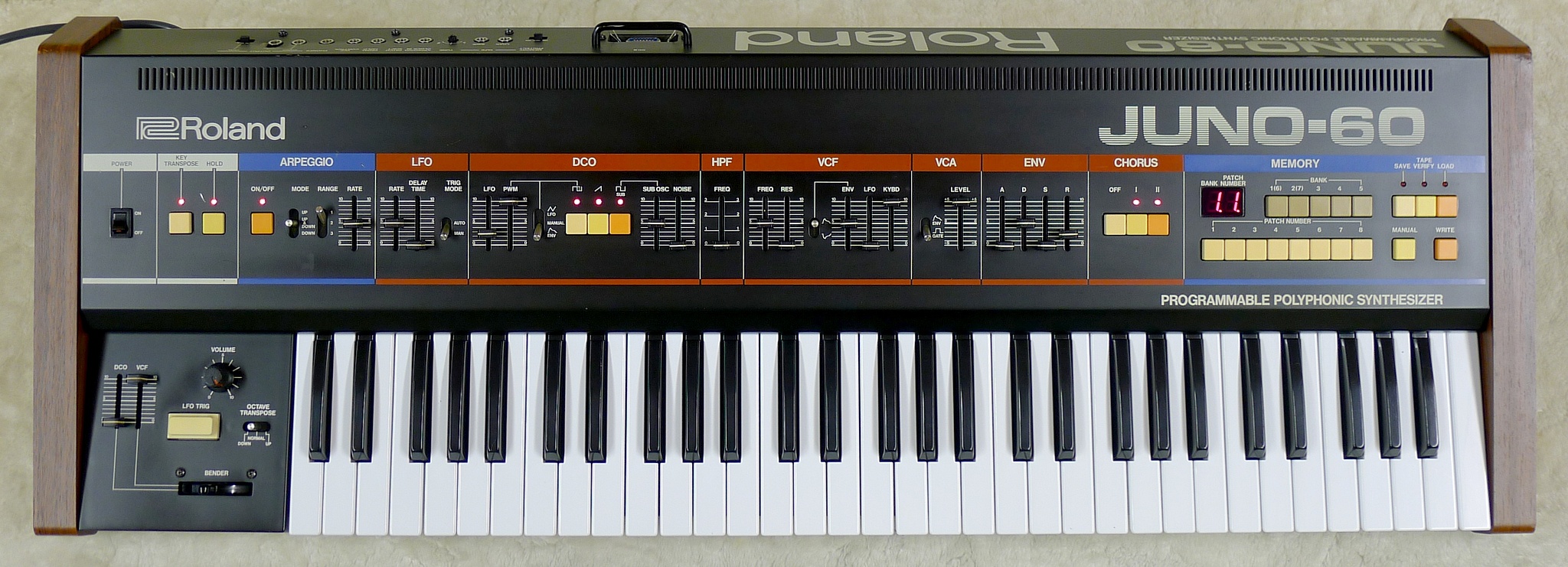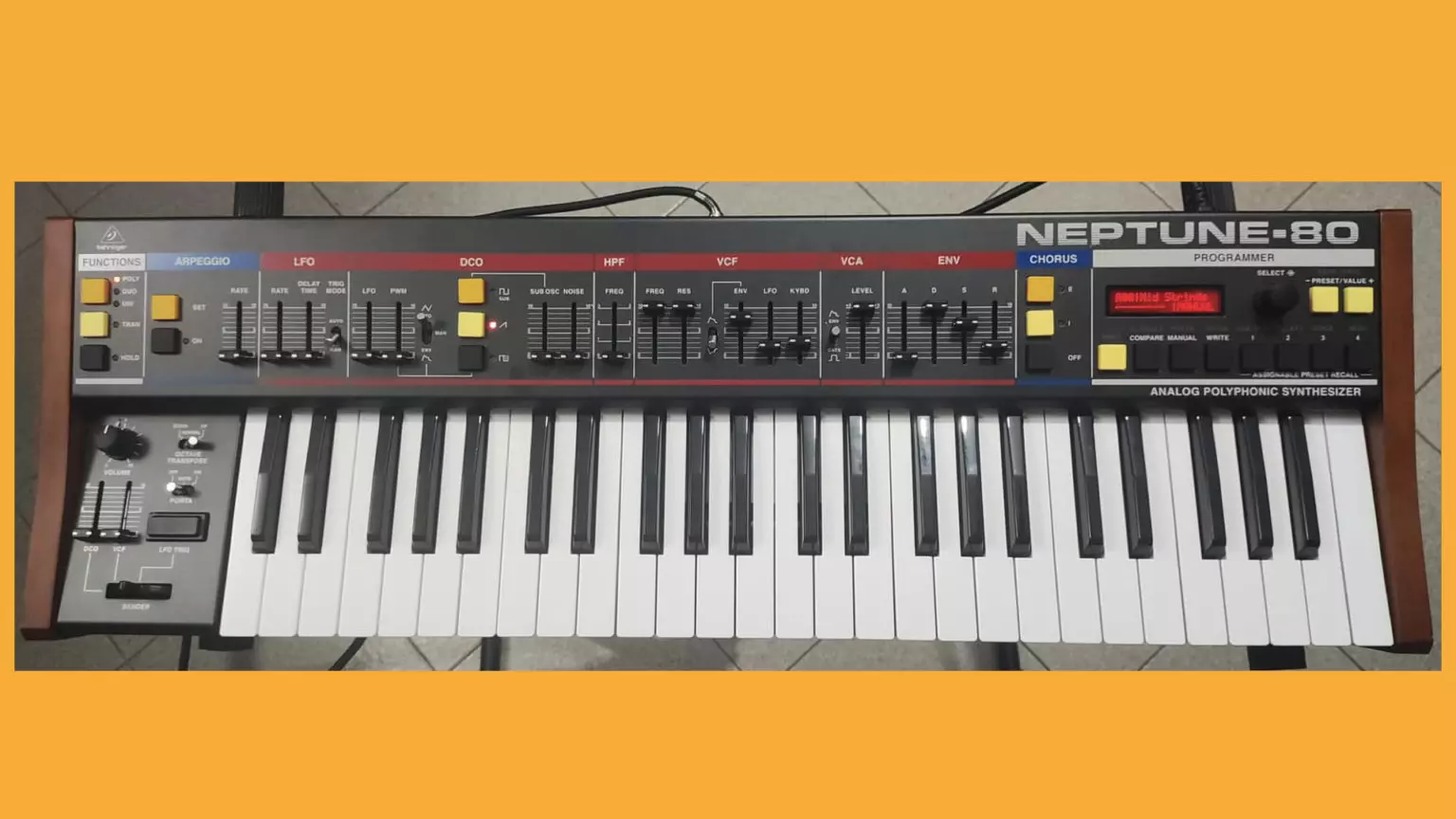Juno-60
Roland | 1982
Analog Emulations
Digital Emulations
The Roland Juno-60 is an analog synthesizer manufactured by the Roland Corporation between 1982 and 1984. It followed the Juno-6, an almost identical synthesizer released months earlier. The Juno synthesizers introduced Roland's digitally controlled oscillators, allowing for greatly improved tuning stability over its competitors. The Juno-6 and Juno-60 were introduced as low-cost alternatives to polyphonic synths such as the Sequential Circuits Prophet-5 and Roland's own Jupiter-8. Its built-in chorus effect was designed to make up for the weaker sound of its single oscillator, and it went on to become its signature effect. The Juno-60 had an immediate impact in 1980s pop music, being used on hits such as "Take On Me" by a-ha, "A Different Corner" by George Michael, and "Time After Time" by Cyndi Lauper. The Juno-60 continued to be popular in the 1990s, being used by house and techno artists. It experienced a resurgence in the 2000s and beyond, gaining popularity amongst modern pop, indie and synthwave artists. It has inspired numerous software emulations.

